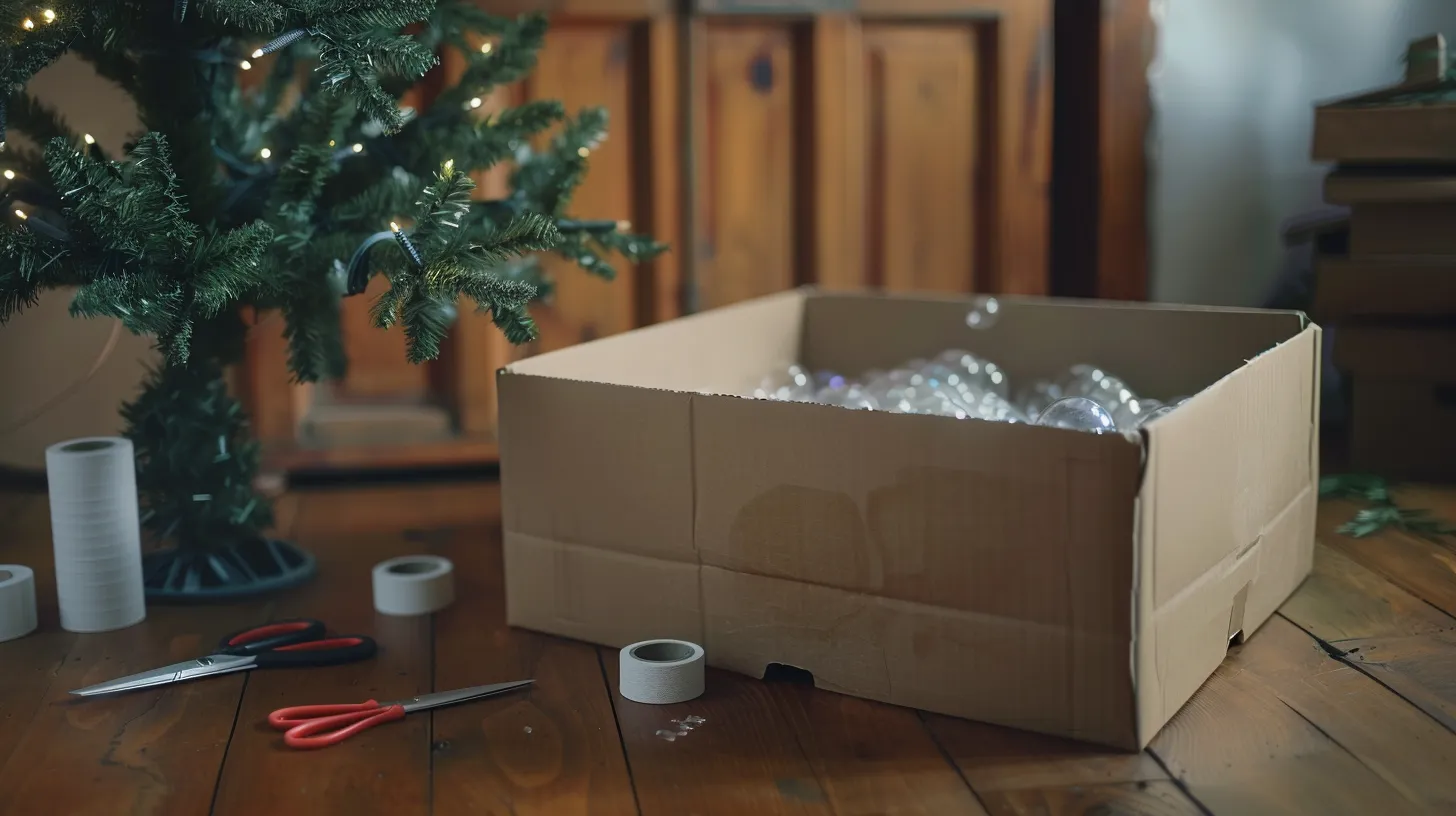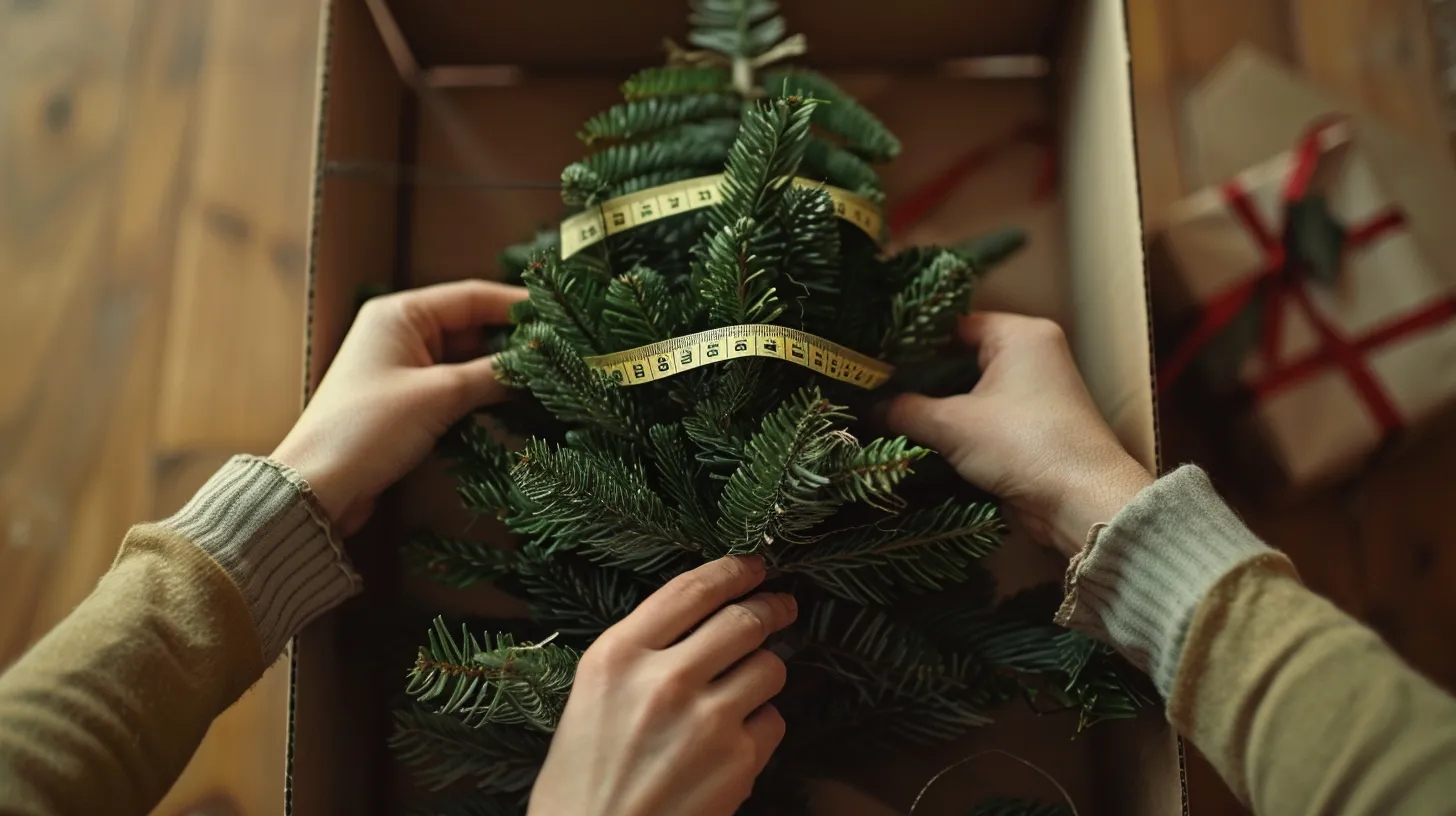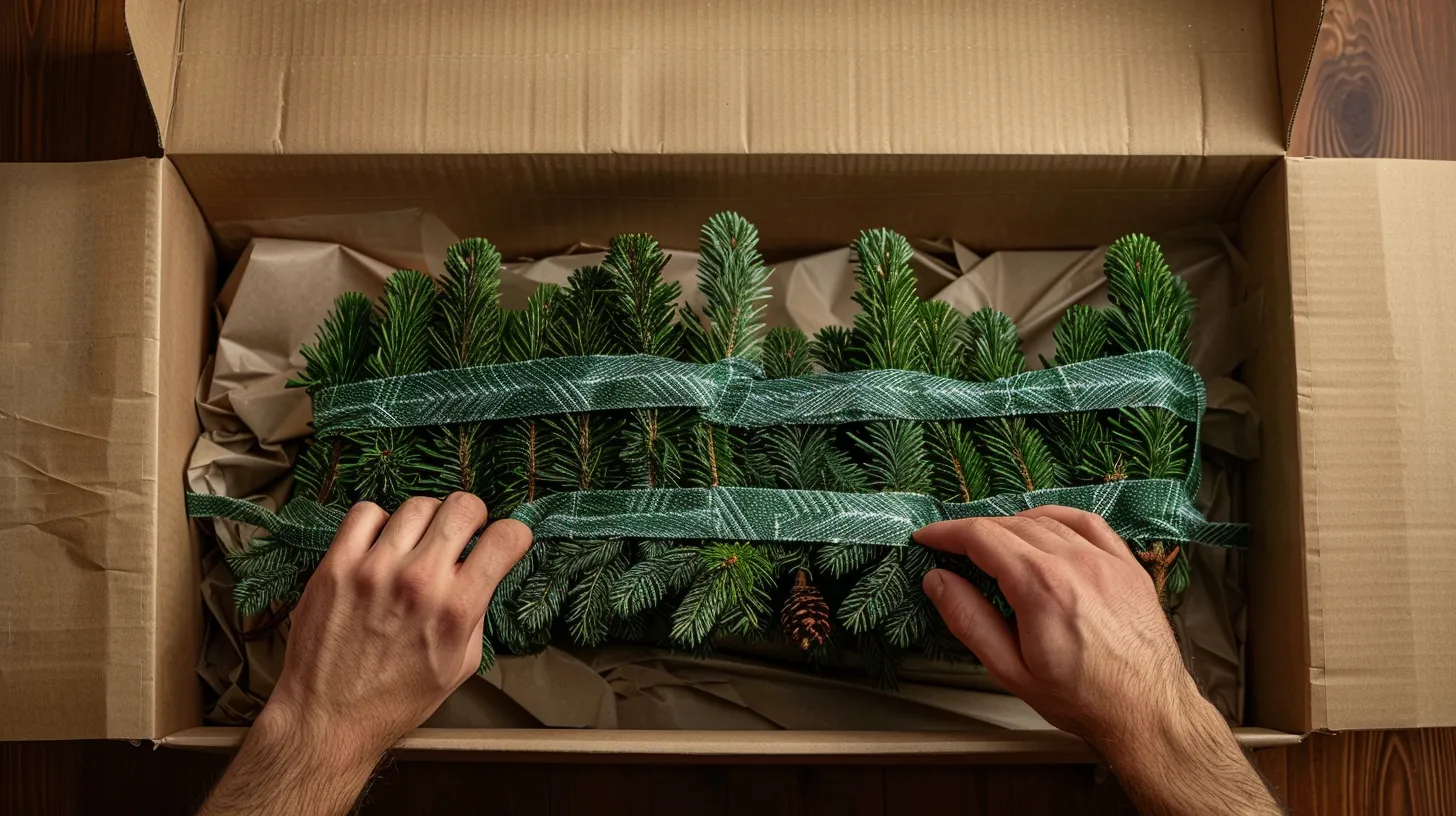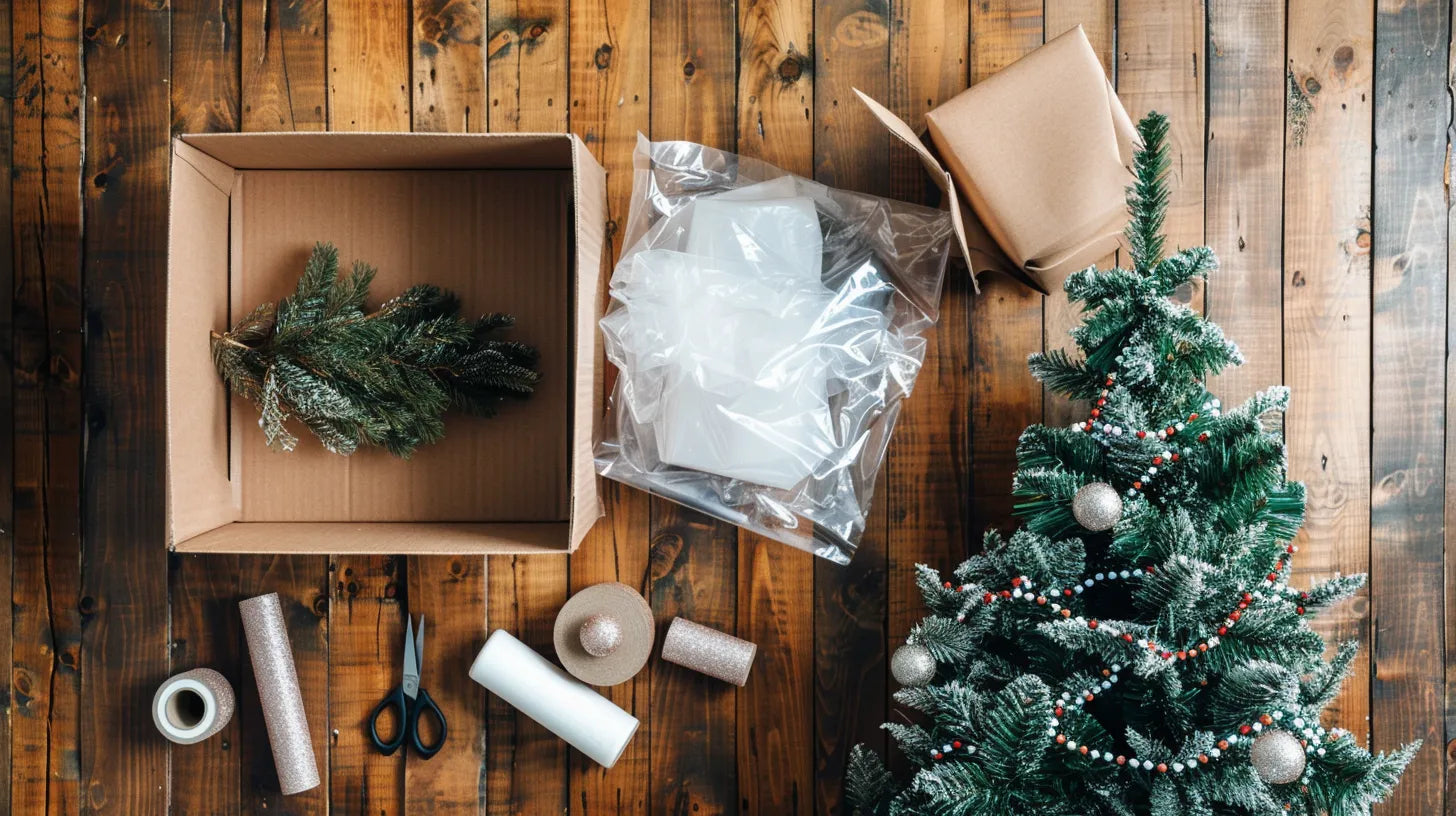The perennial challenge of returning a Christmas tree to its original box is one familiar to many, yet it remains a task fraught with frustration and occasional defeat. The process, however, need not be as daunting as it appears.
By meticulously disassembling the tree into its constituent parts, employing strategic wrapping techniques, and understanding the correct method to compress and secure branches, one can greatly simplify this endeavor.
Before launching into this annual post-holiday ritual, it is crucial to consider the benefits of alternative storage solutions and the importance of preserving the tree's integrity for future festivities.
What awaits is not just a tidier storage solution, but the opportunity to transform a cumbersome chore into an efficient, satisfying conclusion to the holiday season.
Gathering Packing Supplies

To ensure a smooth and efficient packing process for your Christmas tree, begin by gathering all necessary packing supplies, prioritizing durability and protection. For artificial Christmas trees, the ideal scenario involves placing the tree back into its original box. However, over time, this box may become damaged or lost. In such cases, investing in a sturdy tree storage bag designed specifically for this purpose can be a wise decision. These bags are crafted to accommodate the unique shape and size of Christmas trees, providing an excellent alternative to the original packaging.
Next, focus on securing the branches to prevent them from shifting or becoming damaged during storage. Utilizing twine or string to tie the branches tightly together can significantly enhance the stability of the tree, ensuring that it remains compact and protected. Furthermore, for added protection against dust, moisture, and pests, consider wrapping the tree in old sheets, mattress bags, or blankets before placing it into the storage container. This extra layer of protection can make a significant difference in preserving the tree's quality and appearance.
Disassembling the Tree

Having gathered the necessary packing supplies, the next critical step involves carefully disassembling the Christmas tree into its component sections. This process is crucial for ensuring that the tree can be put back into its original box or storage bag without causing damage. It's important to approach this task with caution, especially for artificial trees, which are made up of several detachable sections. By gently separating these sections, one can avoid breaking branches or damaging the connecting elements that hold the tree together.
To maintain the tree's firmness and prevent any potential damage during storage, pin the branches down against the tree stem before packing. This precaution helps keep the tree in good condition and simplifies the reassembly process for the next holiday season. Keeping the tree sections organized is another key step in making sure they fit back into the box properly. Labeling each section as you disassemble the tree can save time and eliminate confusion when it's time to put the Christmas tree back up. By following these guidelines, you can ensure that your tree remains in excellent condition, ready for many more festive seasons to come.
Compressing Branches

After disassembling the tree, the next essential step involves the careful compression of branches to ensure compact storage. This process is crucial for maintaining the condition of your Christmas tree, allowing it to retain its beauty for years to come. To effectively compress the branches without causing damage, it's recommended to give each one a gentle bear hug. This method applies even pressure, reducing the risk of deforming the branches while preparing them for storage.
The use of string plays a pivotal role in securing the branches together. By tying them, you can avoid undue pressure on the tree's connection points, which is vital for preserving its shape. A slipknot is particularly effective for keeping the branches compacted, as it can be easily adjusted or removed without leaving any marks or causing damage. This stands in stark contrast to rubber bands, which are not only difficult to remove but can also exert uneven pressure, potentially deforming the tree's shape.
Secure Wrapping Techniques

Once the branches have been carefully compressed, the next step involves employing secure wrapping techniques to ensure the tree remains protected during storage. This stage is crucial for maintaining the tree's shape and guarding it against damage. By wrapping each section of the Christmas tree individually, you not only prevent the branches from shifting but also make sure the tree is well-preserved for the next festive season.
To achieve this, consider the following tips:
- Wrap each tree section individually using a mattress bag or similar material to protect from dust and moisture.
- Use twine or yarn to tie the branches securely . This helps in keeping the wrapped sections in place and ensures they maintain their shape.
- Avoid using rubber bands to secure the branches as they can cause the tree to deform, losing its aesthetic appeal.
- Carefully stack the wrapped sections back in the box or a specially designed tree storage bag. This step is vital to maintain the tree's shape and to protect it until next use.
These secure wrapping techniques are essential for preserving your Christmas tree's beauty and longevity, making sure it remains a centerpiece of your holiday celebrations for years to come.
Boxing and Storage Tips

Proper boxing and strategic storage play pivotal roles in preserving your Christmas tree's integrity and ensuring its readiness for future holiday seasons. Using string, such as twine or yarn, to secure the branches tightly is crucial to prevent shifting during storage. This step ensures that the tree remains pristine and the branches or connecting elements do not become damaged.
For optimal protection, it's advisable to use the original factory box, which offers a perfect fit and extra protection during transportation and storage. This method helps to safeguard the tree against potential damage and maintains its structure for subsequent use. To further compact the branches carefully and maximize storage space, gently fold or compress them. This action not only aids in fitting the tree back into its storage box but also in preserving its shape and beauty for years to come.
Labeling each section of the tree before storage can significantly ease the reassembly process, eliminating confusion and saving time. Finally, store your tree in a cool, dry place to protect it from moisture-related damage and ensure its longevity. By adhering to these boxing and storage tips, you can maintain the festive splendor of your Christmas tree for many holiday seasons to come.










